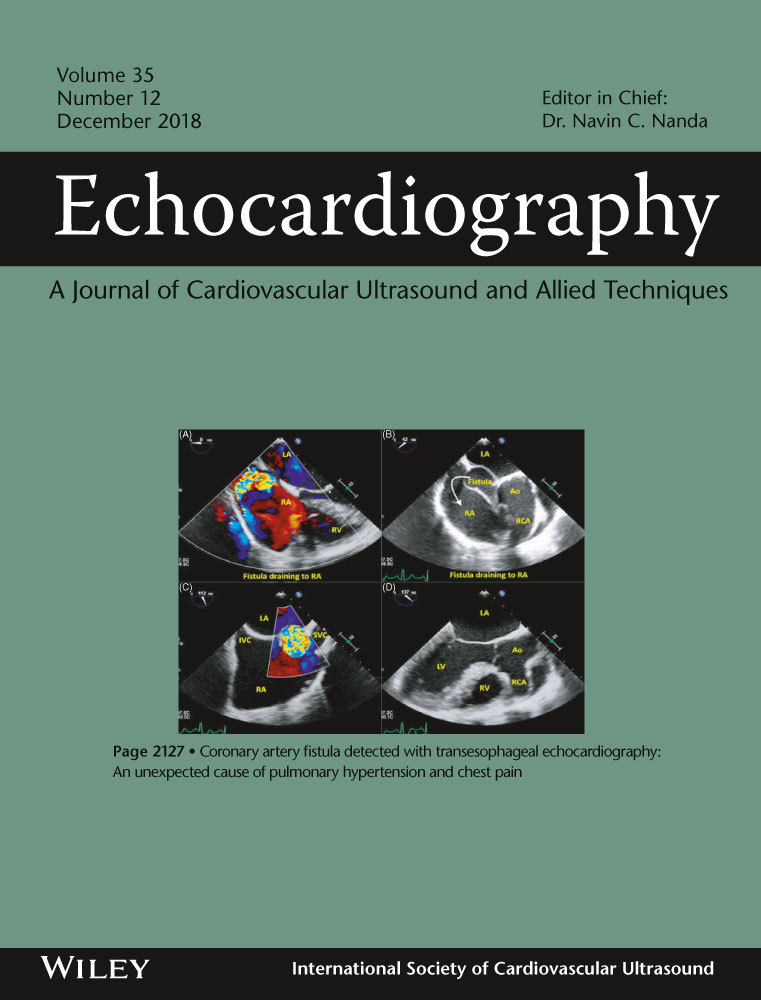Average e′ velocity on transthoracic echocardiogram is a novel predictor of left atrial appendage sludge or thrombus in patients with atrial fibrillation
Funding Information
This study was funded in part by a National Institutes of Health training grant T32HL098129 and Glorney-Raisbeck Research Fellowship to MG.
Abstract
Background
Studies have demonstrated the value of transthoracic echocardiogram (TTE) diastolic parameters in predicting left atrial appendage (LAA) thrombus; however, these studies have been small. We aim to clarify the relationship between TTE diastolic parameters, in particular average e′, and LAA thrombus or sludge.
Methods
A case-control review was conducted of subjects with non-valvular atrial fibrillation (n = 2263) who had undergone TEE (transesophageal echocardiogram) and had a TTE within 1 year of TEE. Cases of LAA sludge or thrombus were matched to controls by age, sex, left ventricular ejection fraction (LVEF), and anticoagulation status.
Results
Forty-three subjects (mean age 73 ± 12, 65% male, LVEF 47%, 44% on anticoagulation) with LAA sludge or thrombus were identified. Compared to matched controls, average TTE e′ (7.3 ± 2.1 cm/s vs 8.7 ± 2.1 cm/s, P < 0.001) and the E:e′ ratio (15 ± 7 cm/s vs 12 ± 5 cm/s; P = 0.005) were significant predictors of LAA sludge or thrombus. Average TTE e′ value of >11 cm/s had 100% sensitivity for ruling out LAA sludge or thrombus.
Conclusion
In individuals with atrial fibrillation, average e′ >11 cm/s on TTE is a promising independent predictor of the absence of LAA sludge or thrombus on TEE.




